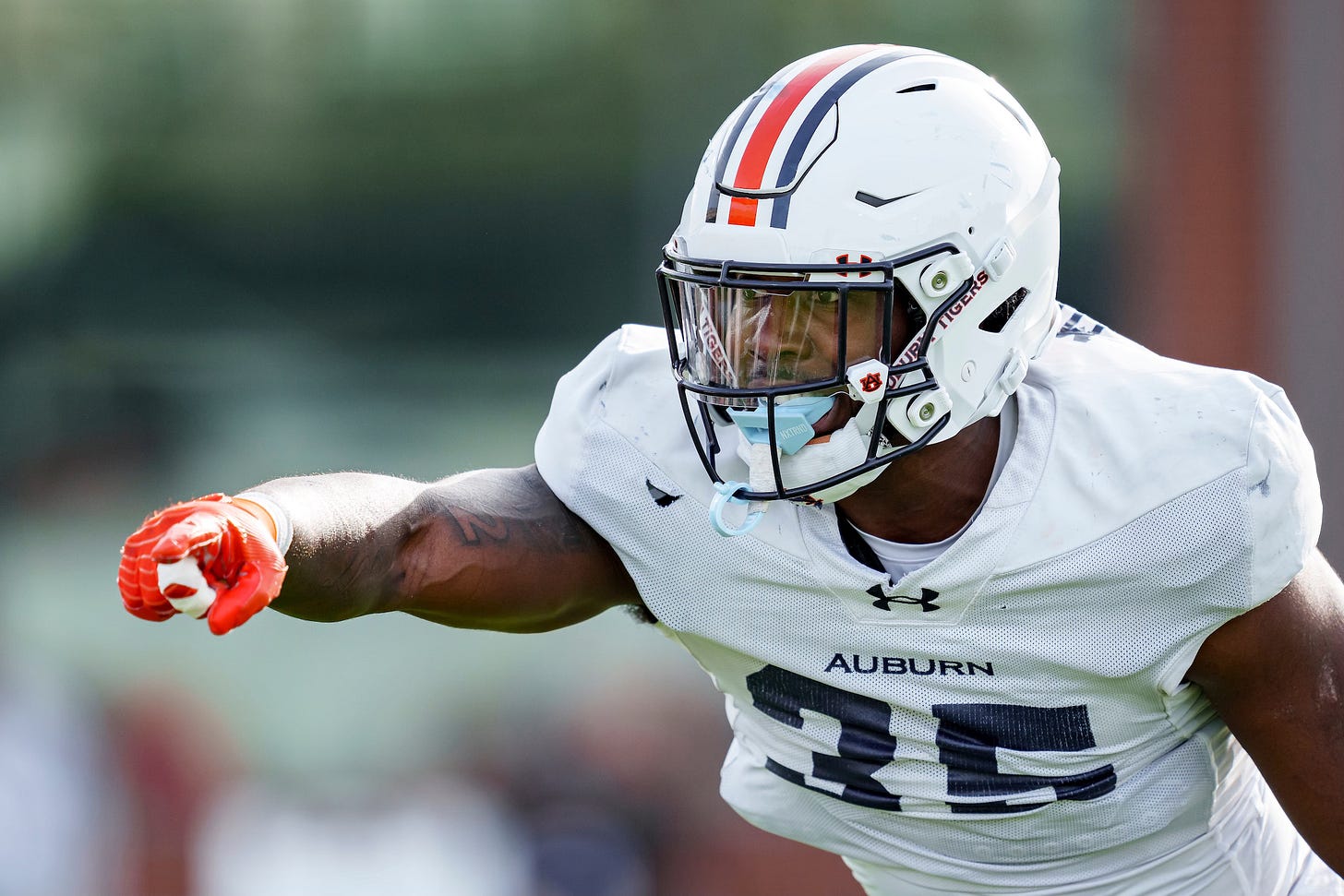Why 2024 should be a bigger year for Auburn's pass rush
The Tigers need to get to the quarterback much more often this fall, and they feel like they've got just the right mix of weapons to do it.
EDGE Jalen McLeod (Austin Perryman/Auburn Tigers)
On the season’s first edition of the Tiger Talk radio show — now moved from its traditional Thursday slot to Monday nights — Hugh Freeze went a step further with his concerns about Auburn’s offensive line from late last week.
In an answer that revealed the Tigers will take a look at switching Percy Lewis and Dillon Wade on the left side, Freeze spoke highly of the edge rushers who were making life difficult for their offensive teammates.
“We’re losing some 1-on-1s in the pass protection game,” Freeze said. “I hope Keyron Crawford and J-Mac (Jalen McLeod) and some of these other guys — Amaris Williams, (Jamonta) Waller — that they’re doing that to other people, too.
As Auburn tries to sort out its offensive line situation over the next week and a half, it’s doing so with plenty of faith in what’s happening up front on the other side of the ball.
Freeze said Monday that the defensive front was one of the two position groups he had been most pleased with in fall camp, joining the highly anticipated wide receivers.
In Auburn’s second scrimmage last Saturday, it sounded like the Tigers caused plenty of havoc off the edge with its returning leader and freaky 5-star freshman.
“J-Mac is a handful,” Freeze said. “Amaris had his way with us Saturday.”
And Auburn needs that to be an early sign of what’s to come this season.
Of all the areas in which the Tigers need to improve from what was their third straight losing campaign last year, the pass rush isn’t the most well-known one — especially when compared to all the offensive issues.
But it could end up being the biggest difference-maker in 2024.
In a sport that gets tilted more toward passing offense with each passing year, a defense’s great equalizer is being able to get to the quarterback at a strong rate. Even the best defensive backs can’t be expected to cover their matchups for an extended amount of time. The best way to slow down an aerial assault, then, is to make life as difficult as possible for the man throwing the football.
The teams that do it, much more often than not, have plenty of on-field success.


